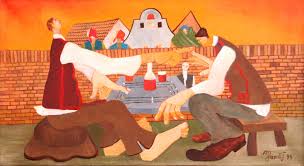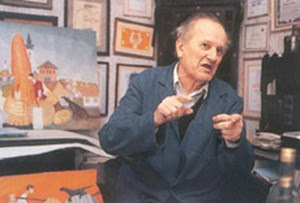
1924 - 1996
Martin Jonaš
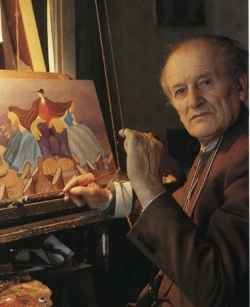
description
Martin Jonaš was the most famous representative of the naïve art of Serbia, one of the founders of the Gallery of naive art in his homeland, in the village of Kovacice. During his long and fruitful creative career, the painter participated in more than 400 personal and collective exhibitions and actively popularized the naïve art of villagers. Martin Jonaš received many prestigious awards in Serbia and abroad. He received many art awards, including the gold medal at the Large International art exhibition in Italy in 1978, together with Salvador Dali. The artist’s painting is full of deep folk philosophy and respect for hard work of an ordinary villager.
Key ideas:
– Martin Jonaš, with his artistic philosophy and original rich imagination, created a unique style that goes beyond naive art. The main motives of his paintings are ordinary people – peasants with big working hands, heavy legs and small grotesque-looking head. They do their daily work, or celebrate against the backdrop of colorful landscapes with characteristic Slovak houses and fields. This is a kind of artist’s idea about the essence of life, a chronicle of the peasant daily life, written by the author’s personal life experience.
– His first paintings were imitative. However, in his sixties, Jonaš’s artistic expression acquired the characteristics of a master. The central figure of the composition is almost always a person, or several people doing some work together. He put much attention also to the land, depicting it as mighty and fertile, and its gifts: corn, wheat and vegetables.
– The themes of rural life dominate in the canvases of the artist; however, unlike his compatriots from Kovacica, Jonaš does not add folk elements and rural lyricism there. The artist depicted simple people: plowmen, hunters, musicians and artisans in their everyday surroundings, giving them stability, strength and vitality. These people stand firmly on their legs and proudly work on their native land. Large figures and absence of small details in Jonaš’s paintings allow you to concentrate on the main sense of the painting, making it monumental and somewhat gloomy.
– Jonaš’s paintings are characterized by a rich and varied color palette. It is dominated by orange and yellow colors, which the artist himself considered a symbol of harvest, health and the grace of nature, reminiscent of the field, the smell of fruits and fresh bread.
– In the artist’s work there are few portraits and landscapes. One of the rare landscapes is “My Kovacica”, a symbolic panorama dominated by the church, where the houses are located in a semicircle. The portraits by the artist are original and expressive; they depict real people with their uneasy fate and strong character. Martin Jonaš created a large number of works, mostly oil on canvas; however, he also worked with watercolor, pastel, and graphic materials.
1924
1942 - 1944
1948
1955
1960
1970
1980
1996
Martin Jonaš was born
He served in the army

Jonaš became a member of organization "Pokrok"

He participated in the creation of the Gallery of Rural Artists
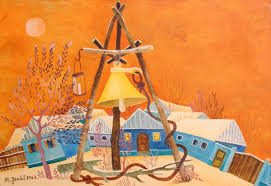
The author developed his own artistic style
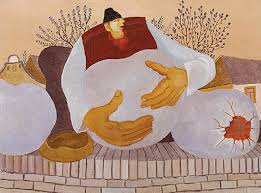
Continued exhibition activities
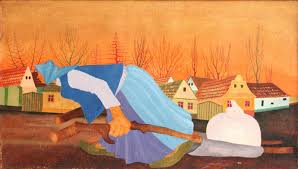
The artist received public recognition
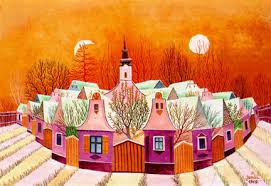
Martin Jonaš died
